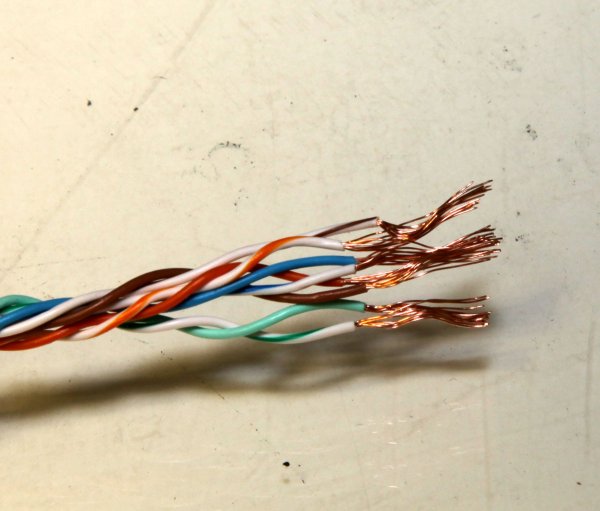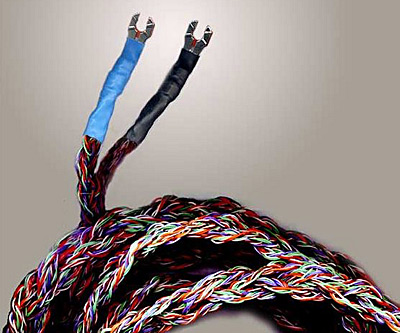Good! Disagreement is a good place to start to learning. The cables that I propose is not adequate for all speakers. However, I disagree that the speakers will flap around uncontrolled by the amplifier damping.
Amplifier damping is easy to understand - it is a simple equation of speaker impedance divided by amplifier output impedance. So, if you have an output impedance of 0.1 ohm and a loudspeaker impedance of 8 ohm, you get a damping of 80. A tube amplifier of output impedance of 2 ohm will then have a damping factor of 4. The highly regarded Burmester 911 with a damping factor of 4250 has an output impedance of 0.00188 ohm.
The Cat5e 2m length has a resistance of 0.05 ohm. So, used in a tube amp, the reduction of damping factor is negligible. In the SS amp with damping of 80, it is reduced to 53, and the Burmester would have its damping reduced to 154.
Resistance of a 15awg copper cable is about 2.5 times the resistance of 11awg copper. So, instead of 0.05 ohm, the 11awg cable should be 0.02 ohm. Then, the damping of 80 is reduced to 66, and the Burmester would have damping of 365 (more than twice).
Do I think that the change from 15awg to 11awg is audible? Yes, I do. Would the woofers "flap uncontrollably"? No, I do not.
I accept this. I don't like using Litz type wire because they are so hard to strip correctly, but I have no sonic reason for preferring Litz over stranded.
Great to meet a fellow ISP owner. I founded the first commercial ISP in Singapore - Pacific Internet.
http://www.ifc.org/ifcext/spiwebsite1.nsf/ProjectDisplay/SPI10403
I went through only 3 different cables before I found the stranded one below. On the jacket is printed "Belkin Corporation Category 5e Patch Cable #R7J304 UTP 4PR 24AWG Type CM (UL) E126126-DG Type FT1 LL58663" I bought various cables from Fry's, Walmart and Radio Shack. The particular cables I ended up using was from Radio Shack.
View attachment 4093
Yes, I tried it - the configuration is the same as my "maximum capacitance, minimum inductance" model. The other model I have is "maximum inductance, minimum capacitance". The trick is to find somewhere in between that sounds best to your ears.



